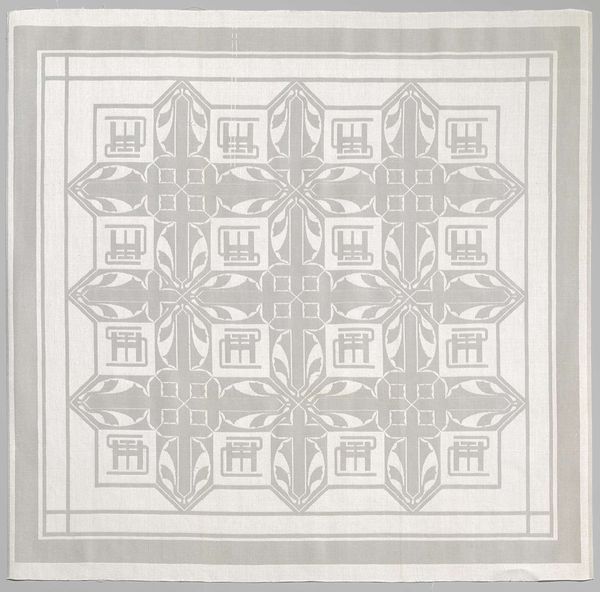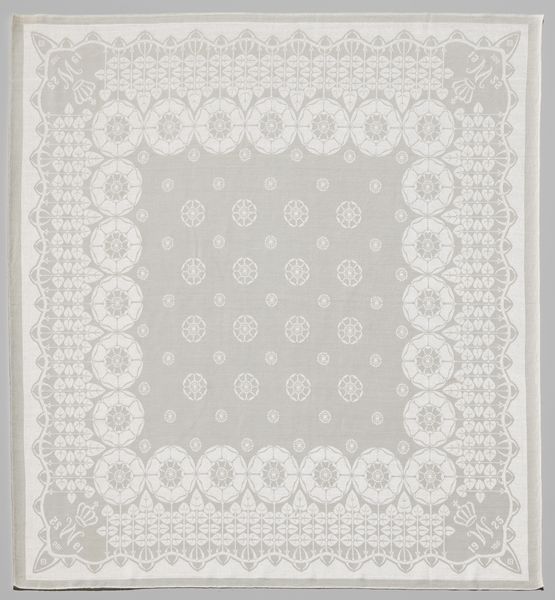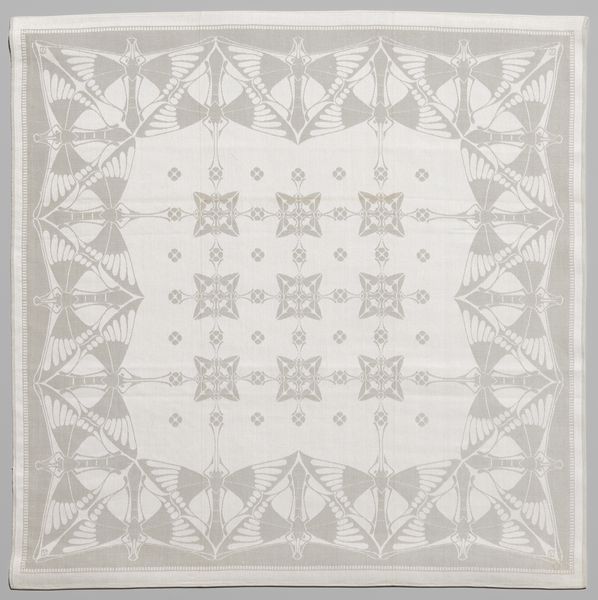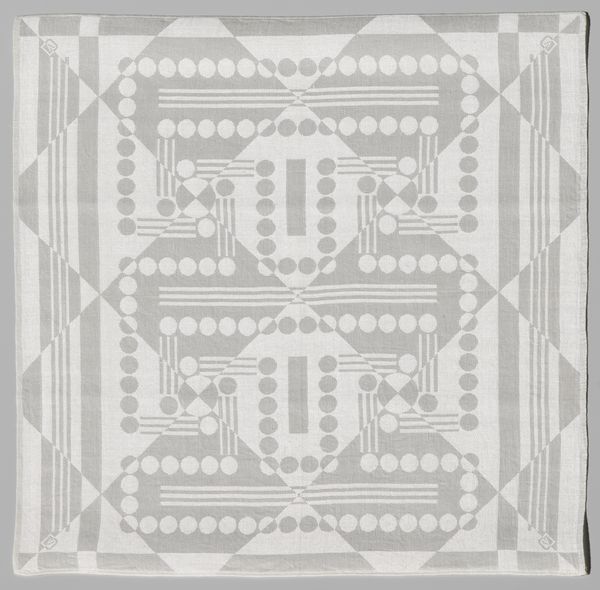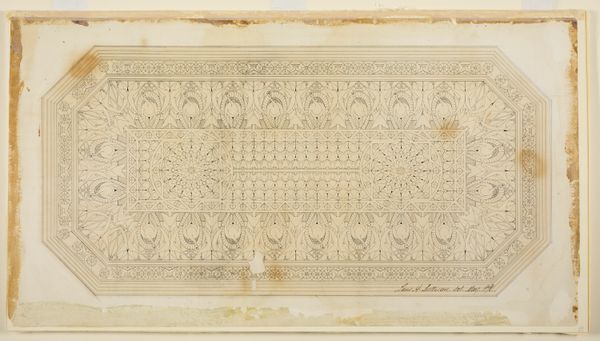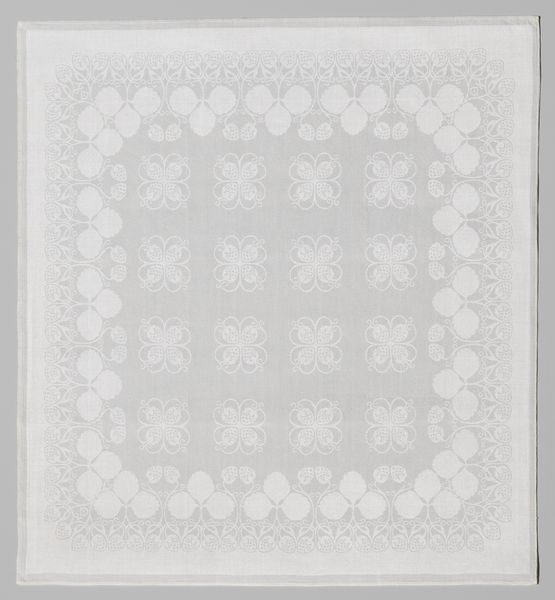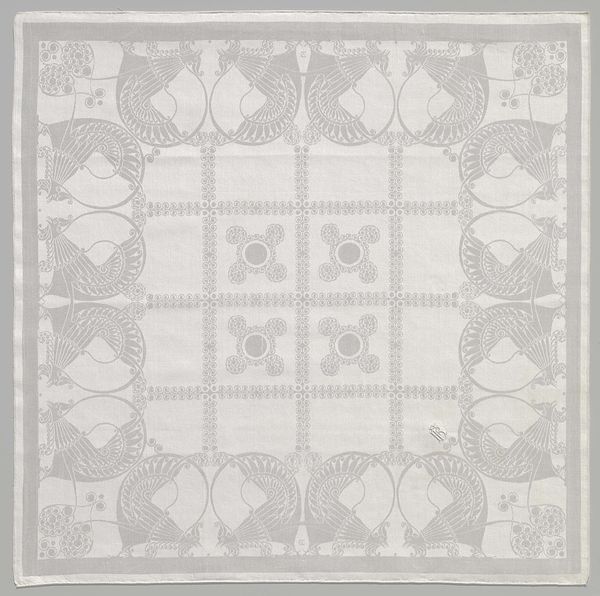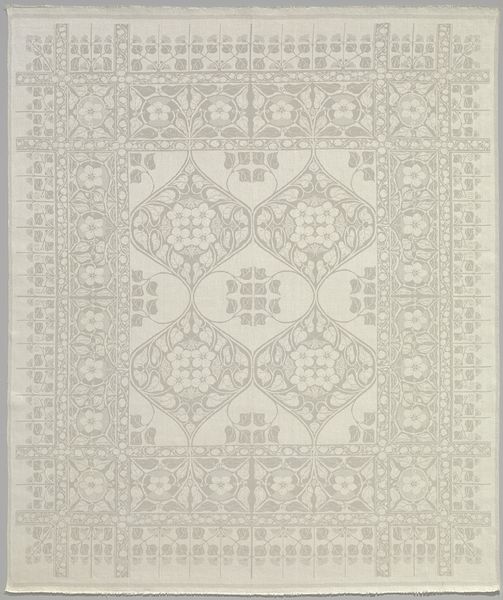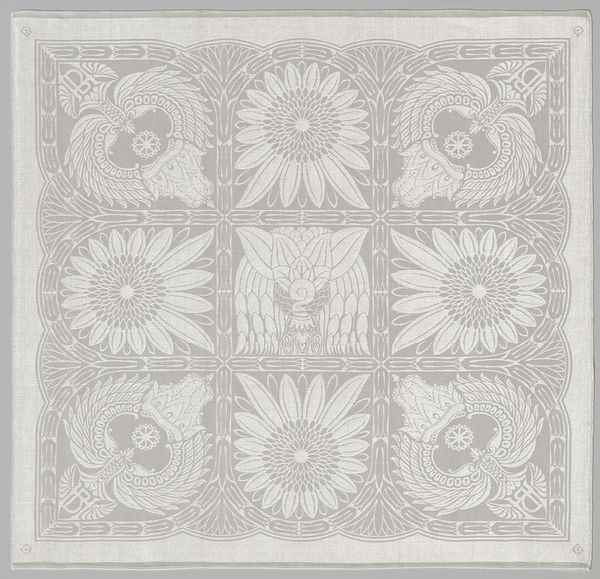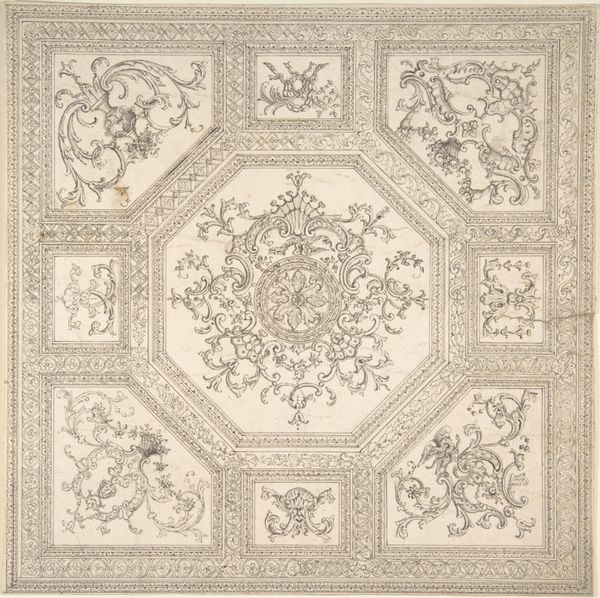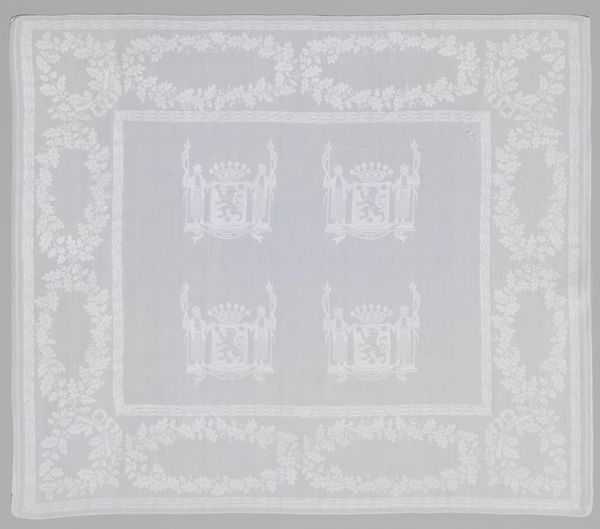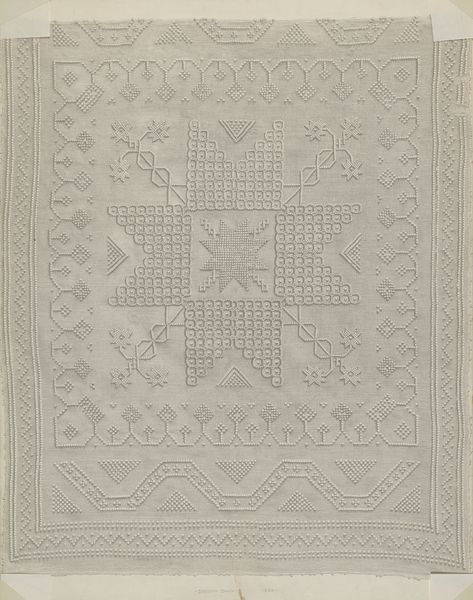
weaving, textile
#
natural stone pattern
#
art-nouveau
#
weaving
#
textile
#
geometric pattern
#
repetitive shape and pattern
#
fabric design
#
repetition of pattern
#
vertical pattern
#
regular pattern
#
pattern repetition
#
decorative-art
#
imprinted textile
#
layered pattern
Dimensions: height 69 cm, width 71 cm
Copyright: Rijks Museum: Open Domain
Curator: Here we have a textile piece designed by E.J.F. van Dissel & Zonen, titled "Servet met het dessin 'Pauw'," created around 1918. It's currently held here at the Rijksmuseum. Editor: Immediately, I'm struck by the subdued palette and the geometry of its structure, evoking a sense of ordered calm. The repetitive circular patterns, contrasted with the peacock motif, suggest an interesting dialogue. Curator: Indeed. Let's consider the composition. Notice how the eye is drawn to these concentric circles with their stylized peacocks and floral insets. The repeated design gives a structured and unified visual field, embodying Art Nouveau's decorative zeal. The limited use of color emphasizes the form and linearity. Editor: Speaking of materials, this textile piece really brings up questions about process. How was this repetitive design achieved in that era? Was it printed using blocks, or perhaps a stencil technique? Considering the era, what sort of labor went into the crafting of each piece? How was this pattern commodified, marketed, and distributed during the 1910s? The production is crucial. Curator: Your emphasis on materiality is crucial, reminding us to look beyond the image itself. Yet, from a Formalist point of view, consider how the stylized peacock operates as a sign. The figure is abstracted, yet it’s undoubtedly recognizable, immediately imbuing the fabric with notions of luxury, elegance, and perhaps even a touch of vanity, due to the peacock's symbolism. Editor: Symbolism intertwined with societal dynamics— I wonder what role such a mass-produced decorative piece had in the consumer culture of its time. It must have changed perceptions. The production processes, its circulation—they impacted our perception of art, shifting the concept from rarefied high art towards something closer to domestic comfort and mass availability. Curator: It is fascinating to examine it from multiple angles. For me, returning to the aesthetic qualities—the rhythm, the balance, and the carefully planned distribution of forms within the borders— it is a beautifully composed textile with subtle dynamism and a wonderful example of controlled expression. Editor: And for me, pondering how a textile like this fits within the history of labor, industrial production, and commercial design offers yet another invaluable understanding of this era's complex material conditions.
Comments
No comments
Be the first to comment and join the conversation on the ultimate creative platform.
